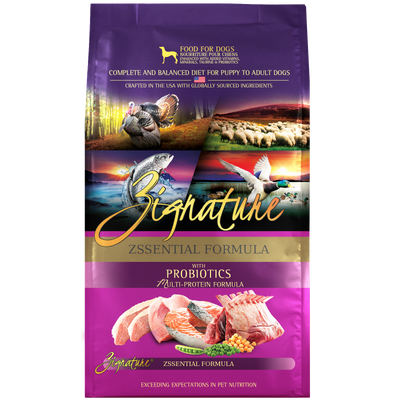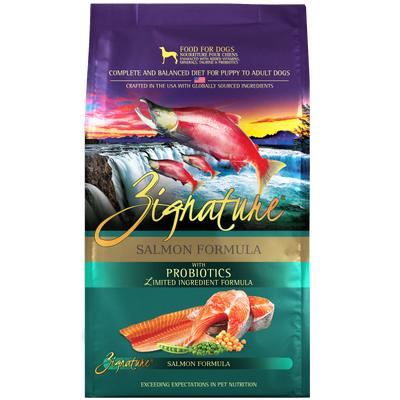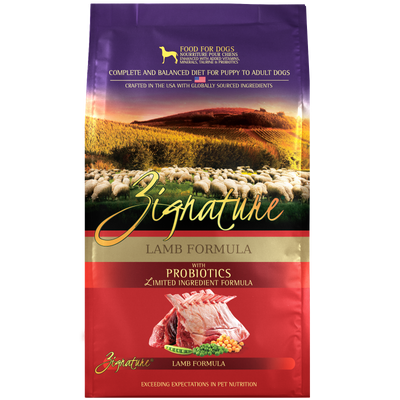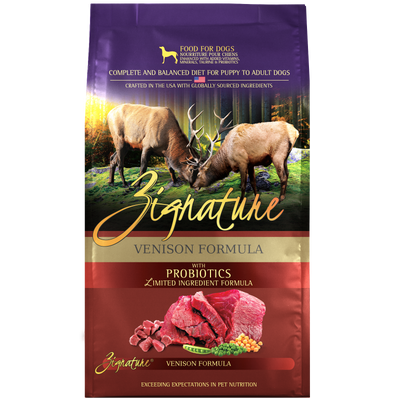What Are Limited Ingredient Diets?
Limited ingredient diets are just that, diets that use a limited number of ingredients to create a complete and balanced meal for your pet. Commonly referred to as “hypoallergenic”, these diets are great for pets with chronic dietary allergies and/or sensitivities. These recipes typically have novel proteins, limited starches, and single source proteins.
While most limited ingredient diets limit some common allergens from the pet’s diet - the term “limited ingredient” is not regulated. This means there is no true threshold for the number of ingredients that can be used in a food advertised as limited ingredient. A quick flip of the bag and scan of the ingredients can help ensure you are getting a product that is truly limited. But in general, these diets contain a single protein source with few starches.
Single Novel Protein
Novel proteins are proteins that are not overly used in pet foods. The most common proteins, and subsequently the most common allergies, are chicken and beef – those are typically avoided in limited ingredient diets. Some examples of novel proteins are duck, venison, boar, trout, etc.
Limited Starches and Carbohydrates
Excessive amounts of anything are never good in your pet’s food, but this is especially true for starchy ingredients. A high starch/carbohydrate load can lead to obesity, digestive upset, yeast infections, skin issues, and more. Most limited ingredient diets take this into consideration and will either limit the amount of carbs use to formulate their diets or choose carbohydrate binders that are low in starch content.
Why Feed Limited Ingredient Diets?
Limited ingredient diets are a great tool for deducing what your pet may be allergic to. For example, you are concerned your pet may be suffering from a protein allergy so you switch them from their everyday chicken and rice food to a limited ingredient salmon and sweet potato recipe. After feeding the new limited ingredient diet exclusively for 4-6 weeks you see whether your pet’s condition has improved, stayed the same, or worsened. If the condition has gotten better, you could assume the previous recipe was not working for your pet and instead salmon is more appropriate. Perhaps the condition continues or worsens so you transition to another limited ingredient diet with a new protein source and begin the trial again. Keep in mind “only about 10-20% of all allergy cases in dogs and cats are due to food allergy”, according to Dr. Jangi Bajwa, a Board-certified veterinary dermatologist at VetDERM Clinic in Surrey BC. Not all allergy symptoms warrant a dietary change, so check in with your veterinarian or a pet nutritionist to help you find the diet most appropriate for your pet.
Limited ingredient diets also give you the opportunity to rotate between recipes and introduce your pet to different protein sources. Rotation has been shown to decrease the risk of future allergies developing as well as keep mealtime exciting for your pet.
____________________________________________
At the end of the day, every pet is unique, and each will require a just as unique diet. It is important to understand what is needed to enable your pet’s wellbeing, and to start there. Whether you decide to feed a limited ingredient diet, or something entirely different, always try to choose a formula with minimally processed ingredients, the protein source high up on the ingredient list, and a reputable brand you can trust.
Sources:
https://www.vetdermclinic.com/food-allergies-in-pets-signs-common-triggers-diagnosis-treatment/
https://vcahospitals.com/know-your-pet/food-allergies-in-dogs











